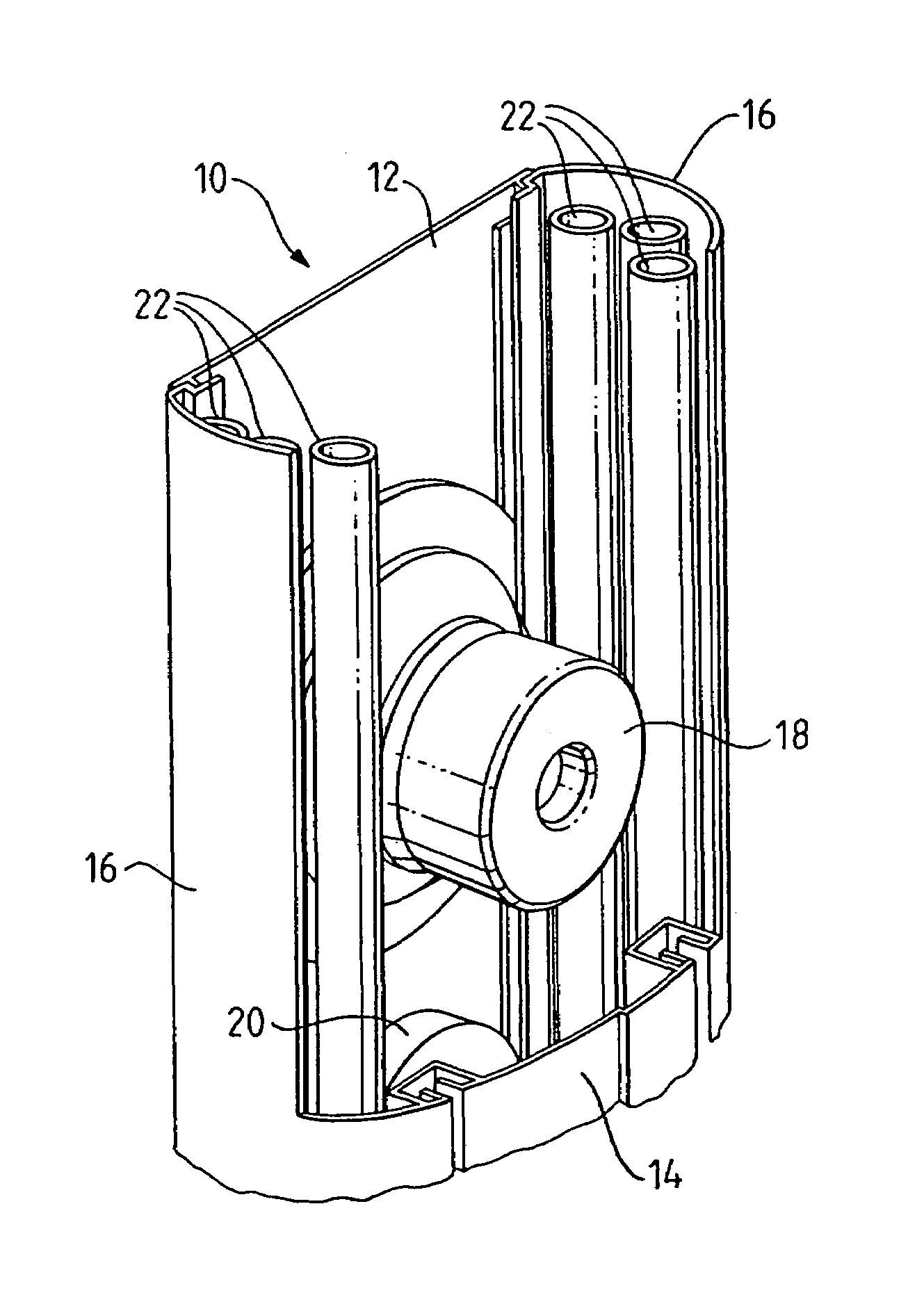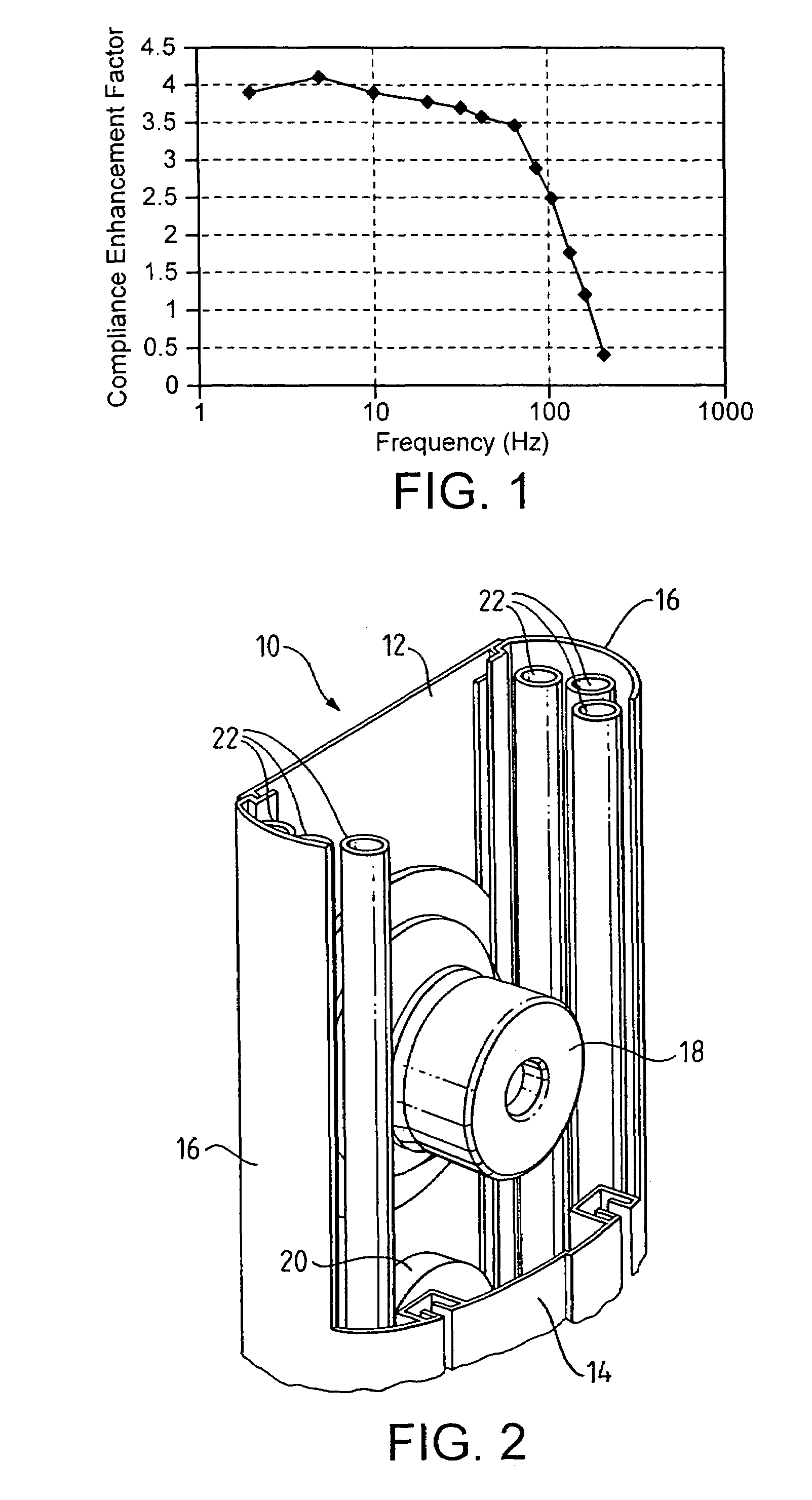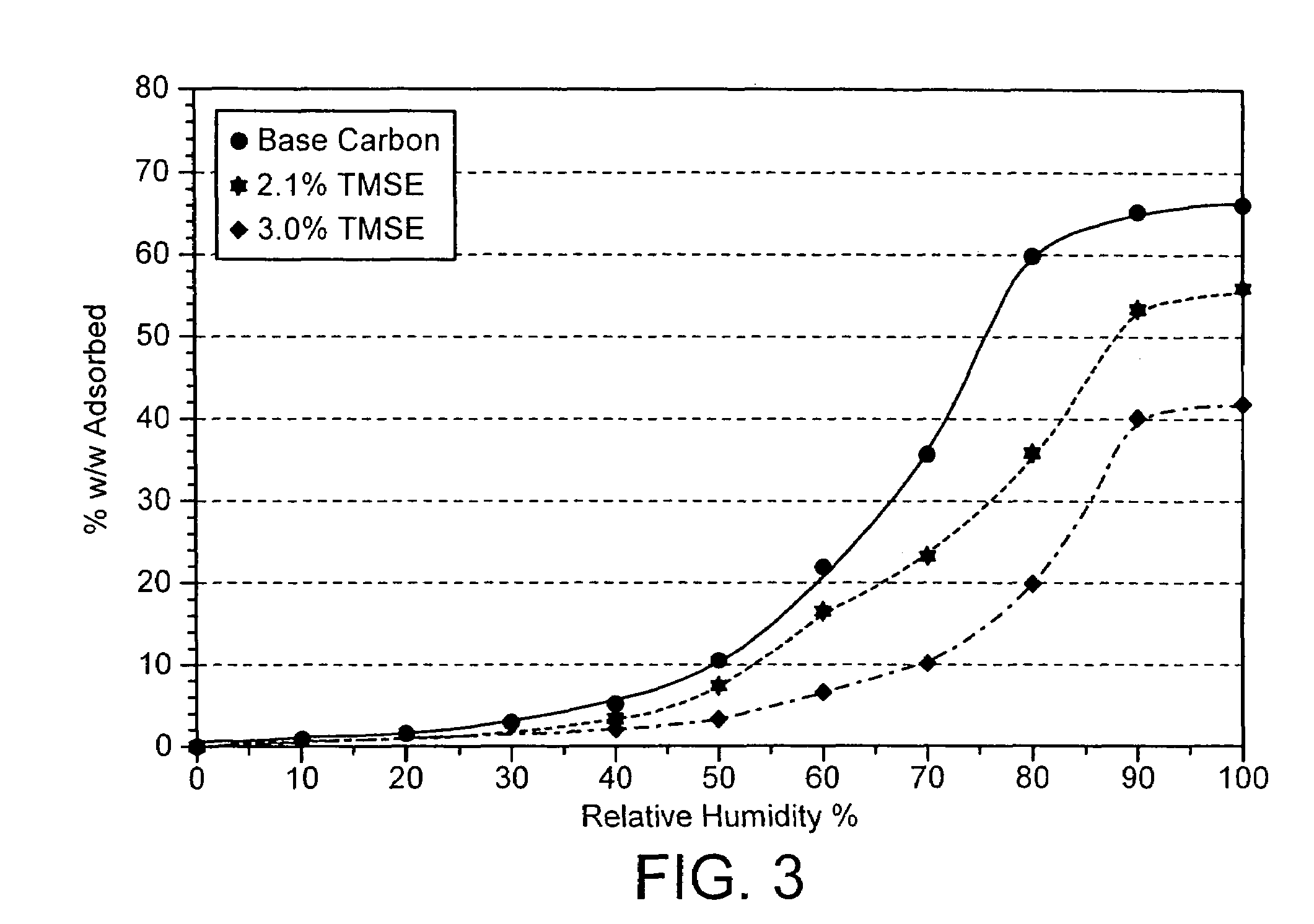Acoustic enclosures
a technology of enclosures and enclosures, applied in the field of acoustic enclosures, can solve the problems of inability to meet the requirements of acoustic compliance, pressure increase, and practical use of such materials, and achieve the effects of improving acoustic compliance, improving acoustic output, and improving acoustic complian
- Summary
- Abstract
- Description
- Claims
- Application Information
AI Technical Summary
Benefits of technology
Problems solved by technology
Method used
Image
Examples
example 1
Trimethylsilylethanol (TMSE) 3% w / w Addition
[0051]Activated carbon: Highly activated coconut shell
[0052]Dried carbon weight: 1.9400 g
[0053]Boiling point TMSE: 73° C.
[0054]Oven temperature: 93° C.
[0055]Weight increase: 0.06 g
[0056]% w / w TMSE: 0.06×100 / (1.94+0.06)=3.0%
example 2
Hexamethyldisiloxane (HMDSO) 6% w / w Addition
[0057]Activated carbon: Highly activated coconut shell
[0058]Dried carbon weight: 1.8800 g
[0059]Boiling point HMDSo: 101° C.
[0060]Oven temperature: 121° C.
[0061]Weight increase: 0.12 g
[0062]% w / w HMDSO: 0.12×100 / (1.88+0.12)=6.0% w / w addition
Determination of Water Uptake as a Function of Relative Pressure at 25° C.
[0063]In determining the property of water adsorption, a dynamic method involving the adsorption of water vapour from a generated air stream was considered as the most suitable which would represent adsorption conditions envisaged in practice. An experimental rig, as briefly described below, was constructed to generate air / water mixtures. “Pyrex” glassware and standard ground glass joints were employed throughout.
[0064]A flow of air was dried and purified by passage through a series of towers containing activated carbon, silica gel, and silica gel+soda lime respectively. The conditioned air stream was divided to pass through two ca...
PUM
 Login to View More
Login to View More Abstract
Description
Claims
Application Information
 Login to View More
Login to View More - R&D
- Intellectual Property
- Life Sciences
- Materials
- Tech Scout
- Unparalleled Data Quality
- Higher Quality Content
- 60% Fewer Hallucinations
Browse by: Latest US Patents, China's latest patents, Technical Efficacy Thesaurus, Application Domain, Technology Topic, Popular Technical Reports.
© 2025 PatSnap. All rights reserved.Legal|Privacy policy|Modern Slavery Act Transparency Statement|Sitemap|About US| Contact US: help@patsnap.com



